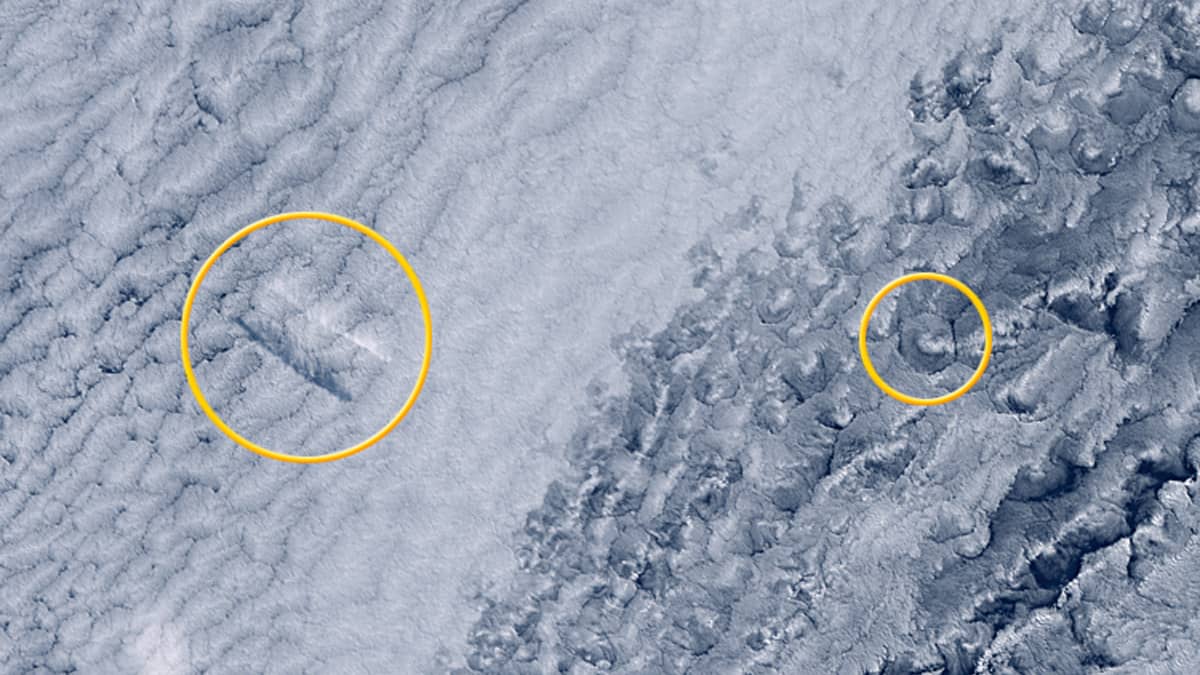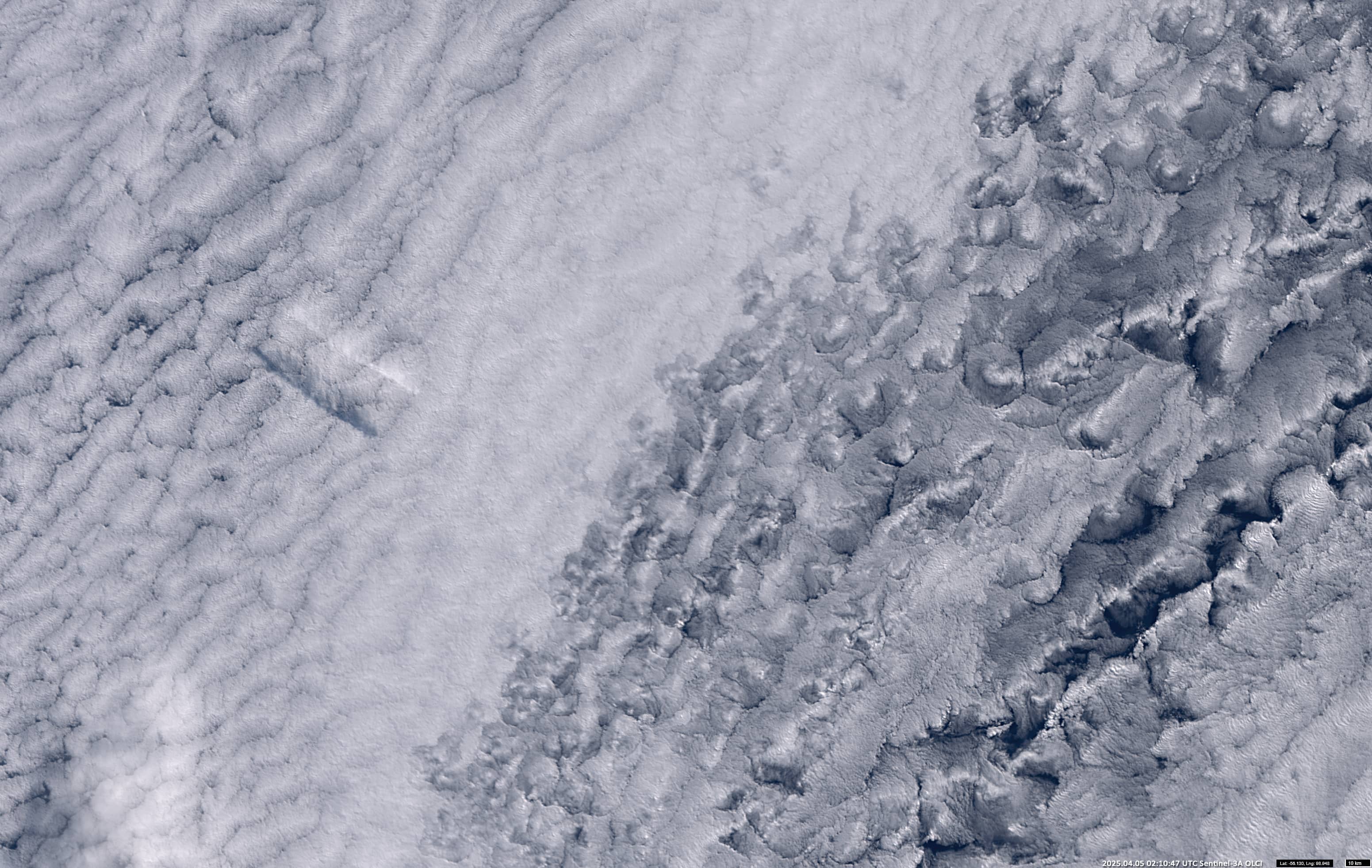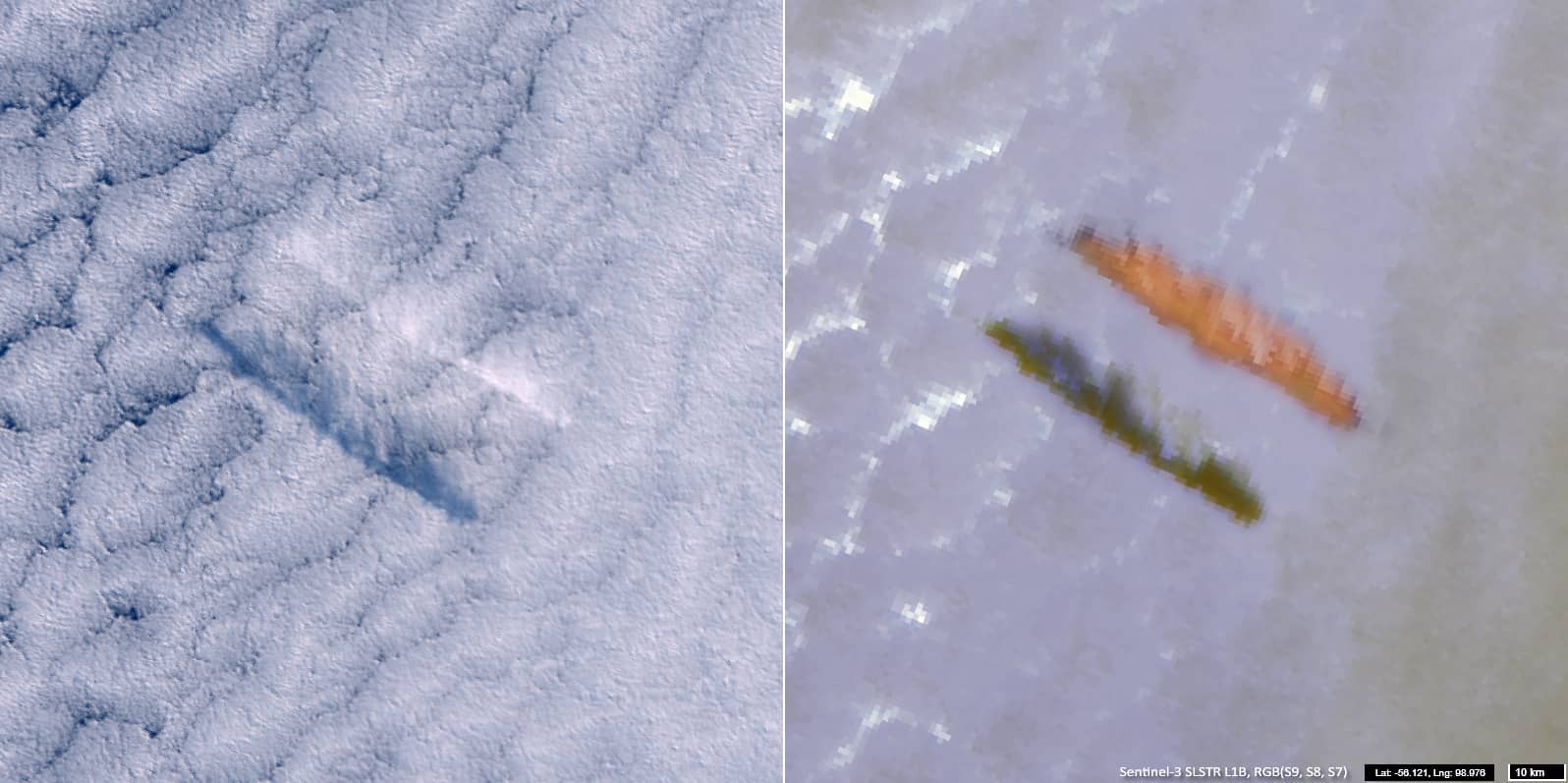
Geometric clouds
Southeast of Kerguelen Island | Indian Ocean
Date of acquisition: April 5th, 2025 | 02:10:47 UTC
Sensor: Sentinel-3A OLCI
Coordinates: ca. 56.2°S, 101.1°E
When examining the cloud situation over the Indian Ocean southeast of Kerguelen, acloud covered with a tablecloth like a rectangular table (~58 x ~22 km) was visible (Figure 1, left). But such clouds generally do not exist, so we investigated the case more closely.
Looking into the thermal IR bands of the SLSTR device on board the Sentinel-3 satellite (Figure 2), as well as observing the cloudiness in the dynamics of its development over 2.5 hours (https://zoom.earth/), provided a fairly reasonable basis for assuming that we were dealing with a single high-altitude cloud and its shadow in this case.
The height of the stratocumulus cloud field is 1000-1200 metres. If we know the sun elevation and the distance of the cloud projection on the underlying layer to its shadow, we can calculate the height of this cloud: ~8.5-8.8 km above the layer, i.e., about 10 km above the sea surface. In two and a half hours the cloud travelled about 350 km in a north-easterly direction, at a speed well above that of the stratocumulus cloud mass below.
About 230km kilometers east of this cloud is a cloud structure of closed convective cells.One cell in particular is almost perfectly shaped like a regular hexagon (Figure 1, right).
Closed-cell clouds (as well as the less stable open-cell clouds) derive their overall shape from Rayleigh-Bénard cells – hexagonal patterns that form naturally when a medium is heated from below.
Diffusion begins with heating, resulting in an uneven temperature distribution of throughout the volume. Vertical cylindrical vortices are formed which rotate towards each other.
Using basic mathematic considerations, it can be shown that only regular hexagons of the same size can cover a plane (in our case – at the boundary between two media) without gaps, and that they are closest in area to a circle (which forms the base of a diffusion cylinders). The gaps between the cylinders naturally and symmetrically “contract” due to the medium’s tendency to equalize pressure and reach thermodynamic equilibrium, resulting in regular hexagons, while the cylinders become hexagonal prisms, like basalt columns.
In the ideal case, the bases of the prisms would be identical and all cells would look like the honeycombs of a beehive; but in reality such perfect structures are rarely observed due to chaotic motion within the medium and external influences.





